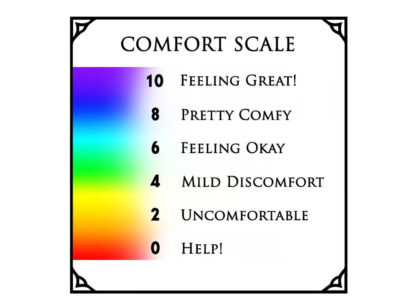Fibromyalgia Syndrome (FMS) is a painful condition predominantly involving muscles, and the most common cause of chronic, widespread musculoskeletal pain. A diagnosis includes at least 11 of 18 specific tender points that hurt when pressed (with no reference pain elsewhere). The tender points must be present in all four quadrants of the body for more than three months.
In recent years it has become increasingly clear that FMS and several other chronic conditions including chronic fatigue syndrome, myofascial pain syndrome, headaches, irritable bowel syndrome, temporomandibular joint dysfunction syndrome and restless legs syndrome, are overlapping conditions with similar features.
In 1992, Dr. Mohammad Yunus, a Nobel Prize winner, collectively called these conditions ‘central sensitivity syndromes’ (CSS)1 based on an understanding of the current mechanisms of these syndromes that bind them.
In 1995, an important concept emerged that finds the final integrating and modulating mechanisms in CSS are central, rather than peripheral. For example, an initial trauma may cause regional soft tissue pain/ myofascial pain syndrome, but through the process of central nervous system (CNS) neuroplasticity, the pain may become centralized with subsequent spread of pain to other areas.2,3 As another example, migraine may initially have a peripheral component of vasodilatation, but the severe pain of migraine is orchestrated by a central mechanism.4 It now appears that irritable bowel syndrome is more a disease of CNS than bowel.5-10 Restless legs syndrome is another disease of the CNS, similar to the current understanding that FMS is a disease of CNS rather than muscle.
A relevant question that should be addressed is how one can explain the pain in fibromyalgia and similar CSS conditions in the absence of obvious active peripheral inflammation, or nerve injury. Many patients with fibromyalgia report onset of their symptoms following a trauma (e.g., an automobile accident or repetitive injury at work) or inflammation, such as a viral illness. The initial inflammation subsides, but the pain becomes centralized, persistent and chronic, even if the initial noxious inflammation ceases to exist.
Have we looked at all the possibilities for FMS and other CSS? It is possible that further pain perception input emanates from continuous cervical or lumbar spine strain due to poor posture, range of motion changes due to upper airway resistance, or trigeminal nerve insult because of a jaw misalignment causing joint dysfunction?
A large body of data supports that central mechanisms, including central sensitivity, play a significant role in both migraines and tension-type headaches. It is well known that during a migraine attack patients complain of hypersensitivity to light, smell and sound; and that pain of migraine may be felt in a widespread distribution, including arms and legs.4 Besides the role of extra cranial blood vessels, central mechanisms involving cortical events, hypothalamus, serotonin, excitatory amino acids and central trigeminal nerve pathways are also involved.4,11 Again, is involvement of the trigeminal nerve pathway related to a possible structural-physical insult of the jaw joint misalignment?
In chronic tension-type headaches, widespread distribution of pain as well as a qualitative difference in pain following a peripheral noxious stimulus would support such a CNS role.4,12 Bendtsen, et al, demonstrated decreased pain detection and tolerance thresholds in a widespread distribution in the pericranial muscles, as well as the fingers, suggesting a role of central sensitivity, in chronic tension-type headaches.13 Bendtsen, et al, has also demonstrated that there is qualitatively altered sensation in chronic myofascial pain syndrome, suggesting an aberrant central pain mechanism,14 possibly TMJ disorder.
Have we looked at all the pain mechanisms? It has been postulated that the trigeminal nerve pathways vascular component in migraines and the neuroplasticity of the trigeminal nerve can modulate all of these symptoms. Does it warrant another look at the jaw joint and TMJ disorder, which produces trigeminal nerve injury? The trigeminal nerve is insulted when stimulated by jaw misalignment (a bad bite) which can be created by external or internal derangement of the jaw joint. When this occurs, it is an ongoing physical structural misalignment altering sensation and pain. These central sensitizations have a continuous chronic pain induction. Could the cause be as simple as a misalignment of the jaw bone which is continuous and persists in the absence of what is pathologically looked at in the past as peripheral inflammation? Has this been overlooked as the cause, but considered a syndrome? Could this be the answer to many continuous chronic symptoms?
Summary: Fibromyalgia syndrome (FMS) and similar other conditions, e.g., myofascial pain syndrome, irritable bowel syndrome, chronic fatigue syndrome, headaches, migraines and restless legs syndrome share several characteristics including pain, poor sleep, fatigue, hyperalgesia, and an absence of obvious tissue pathology. These syndromes are bound by a common pathophysiological mechanism (i.e., neurohormonal dysfunctions) which is generally different from those in psychiatric diseases. Central nervous system (CNS) sensitivity, either intrinsic or due to CNS neuroplasticity secondary to peripheral stimuli, results in amplified, widespread and persistent pain. This central sensitivity seems to be the most important aberration among the neuroendocrine dysfunctions. Thus, FMS and other overlapping syndromes have been called “central sensitivity syndromes” (CSS) as a group. An estimated 40 million Americans suffer from CSS. More research needs to address the ongoing chronic effect of trigeminal nerve disorder (or TMJD) and its contributions to CSS.
Dr. Leonard Feld is a TMJ-TMJD Dentist with offices in Los Angeles, San Jose and Indian Wells. He is the co-founder of the TMJ & Sleep Medicine Network and his philosophy is always conservative, non-invasive and non-surgical treatment. Dr. Feld can be reached at (760) 341-2873. www.DocFeld.com
References: 1) Yunus MB. Fibromyalgia and related syndromes. Current Practice of Medicine. 2000 Feb; 3 (2). 2) Coderre TJ, Katz J, Vaccarino AL, Melzack R. Contribution of central neuroplasticity to pathological pain; review of clinical and experimental evidence. Pain 1993;52:259-85. 3) Dubner R.Ruda MA. Activity-dependant neuronal plasticity following tissue injury and inflammation. 1992; 15:96-103. 4) Dalessio DJ, Silberstein SD. Wolff’s headache and other head pain. 1993; Oxford University Press, New York. 5) Mertz H, Naliboff B, Munakata J, et.al. Altered rectal perception is a biological marker of patients with irritable bowel syndrome. Gastroenterology 1995;109:40-52. 6) Mayer EA. Emerging disease model for functional gastrointestinal disorders. Am J Med 1999;107:12S-19S. 7) Silverman DHS, Munakata JA, Ennes H, et al. Regional cerebral activity in normal and pathological perception of visceral pain. Gastroenterology 1997; 112:64-72.8) Hiltz RE, Gupta PK, Maher KA, et al. Low threshold or visceral nociception and significant objective upper gastrointenstinal pathology in patients with Fibromyalgia syndrome. Arthritis Rheum 1993; 36:S203. 9) Collado-Seidel V, Winkelmann J, Trenkwalder C. Aetiology and treatment of restless legs syndrome. CNS Drugs 1999; 12:9-20. 10) Entezari-Taher M, Singleton JR, Jones CR, et al. Changes in excitability of motor cortical circuitry in primary restless legs syndrome. Neurology 1999; 53:1201 5.; 11) Martinez F, Castillo J, Rodriguez JR, et al. Neuroexcitatory amino acid levels in plasma and cerebrospinal fluid during migraine attacks. Cephalalgia 1993; 13:89-93.; 12) Jensen R, Pathophysiological mechanism of tension-type headache: a review of epidemiological and experimental studies. Cephalalgia 1999; 19:602-21. 13) Bendtsen L, Jensen R, Olesen J. Decreased pain detection and tolerance thresholds in chrinic tension-type headache. Arch Neurol 1996; 53:373-76. 14) Bendtsen L, Jensen R, Olsen J. Qualitatively altered nociception in chronic Myofascial pain. Pain 1996; 65:259-64.















































Comments (0)